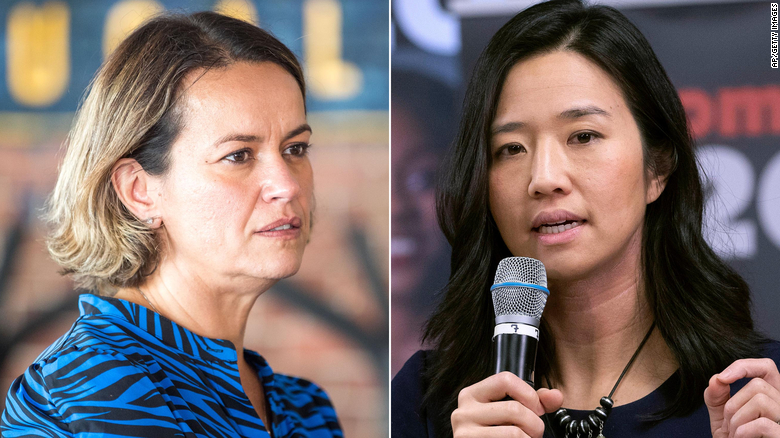PRIMAL SCREAM THERAPY REDUX
Finnish ex-con opens 'rage room' to repay societyIssued on: 15/09/2021 -

Janne Raninen became embroiled in gangs while growing up in a disadvantaged suburb in Sweden Olivier MORIN AFP
Helsinki (AFP)
A Finnish man who spent two decades behind bars for murder is trying to repay his debt to society by founding a "rage room" -- letting clients vent their anger on household objects with a baseball bat.
Janne Raninen, a 44-year-old convicted of two gang-related murders, opened Helsinki's "Raivoomo" ("rage centre") two months ago using money borrowed from friends, and says he has been "fully booked" ever since.
"I was in prison until six months ago and I thought this kind of room could have also been good for me when I was younger," says Raninen, who became embroiled in gangs while growing up in a disadvantaged suburb in Sweden.
"I thought, when I come out I'm going to start this room and let people let out their anger here instead of doing the stupid things that I did in my youth," he tells AFP.
Raninen also gives regular talks to young people, trying to steer them away from gangs.

Helsinki (AFP)
A Finnish man who spent two decades behind bars for murder is trying to repay his debt to society by founding a "rage room" -- letting clients vent their anger on household objects with a baseball bat.
Janne Raninen, a 44-year-old convicted of two gang-related murders, opened Helsinki's "Raivoomo" ("rage centre") two months ago using money borrowed from friends, and says he has been "fully booked" ever since.
"I was in prison until six months ago and I thought this kind of room could have also been good for me when I was younger," says Raninen, who became embroiled in gangs while growing up in a disadvantaged suburb in Sweden.
"I thought, when I come out I'm going to start this room and let people let out their anger here instead of doing the stupid things that I did in my youth," he tells AFP.
Raninen also gives regular talks to young people, trying to steer them away from gangs.

The pandemic is by far the main cause of anger but a divorce-themed smash-up room also proves popular
Olivier MORIN AFP
"It's one of my ways to try and pay back society," he says, adding that the rage room is another -- not only through the taxes he pays but also through the wellbeing it can bring people.
- Smash hit with women -
Rage rooms are fairly common, particularly in the US, and Raninen's new venture has proven a particular smash hit with women letting out post-pandemic frustration.
"I feel fantastic, you just get swept along with it," says Sanna Sulin, who has come to celebrate her 50th birthday, letting rip on old printers, a vacuum cleaner and crockery, to a soundtrack of her favourite music.

"It's one of my ways to try and pay back society," he says, adding that the rage room is another -- not only through the taxes he pays but also through the wellbeing it can bring people.
- Smash hit with women -
Rage rooms are fairly common, particularly in the US, and Raninen's new venture has proven a particular smash hit with women letting out post-pandemic frustration.
"I feel fantastic, you just get swept along with it," says Sanna Sulin, who has come to celebrate her 50th birthday, letting rip on old printers, a vacuum cleaner and crockery, to a soundtrack of her favourite music.

I feel fantastic, you just get swept along with it,' says Sanna Sulin
Olivier MORIN AFP
"My friend brought me here to try it and at first I refused, I'm more into repairing things," she tells AFP standing among fragments of metal, plastic and glass.
"We women are used to having to behave properly, having to control ourselves," she says.
Eighty percent of the customers are women aged 25 to 45, owner Raninen noted.
Despite Finland's reputation as a bastion of gender equality, Raninen agrees that "women's aggression is taboo, they're not allowed to let off steam".
The pandemic is by far the main cause of anger but a divorce-themed smash-up room -- painted pink with a suit and wedding dress hanging on the wall -- also proves popular.

"My friend brought me here to try it and at first I refused, I'm more into repairing things," she tells AFP standing among fragments of metal, plastic and glass.
"We women are used to having to behave properly, having to control ourselves," she says.
Eighty percent of the customers are women aged 25 to 45, owner Raninen noted.
Despite Finland's reputation as a bastion of gender equality, Raninen agrees that "women's aggression is taboo, they're not allowed to let off steam".
The pandemic is by far the main cause of anger but a divorce-themed smash-up room -- painted pink with a suit and wedding dress hanging on the wall -- also proves popular.

'This is the best place for letting out steam and all the anxiety,' says Janne Raninen
Olivier MORIN AFP
"In the long term it's always better to go and talk to a therapist and work with the issues inside you," he says.
But in the short run, "this is the best place for letting out steam and all the anxiety".
© 2021 AFP
"In the long term it's always better to go and talk to a therapist and work with the issues inside you," he says.
But in the short run, "this is the best place for letting out steam and all the anxiety".
© 2021 AFP

 S
S












